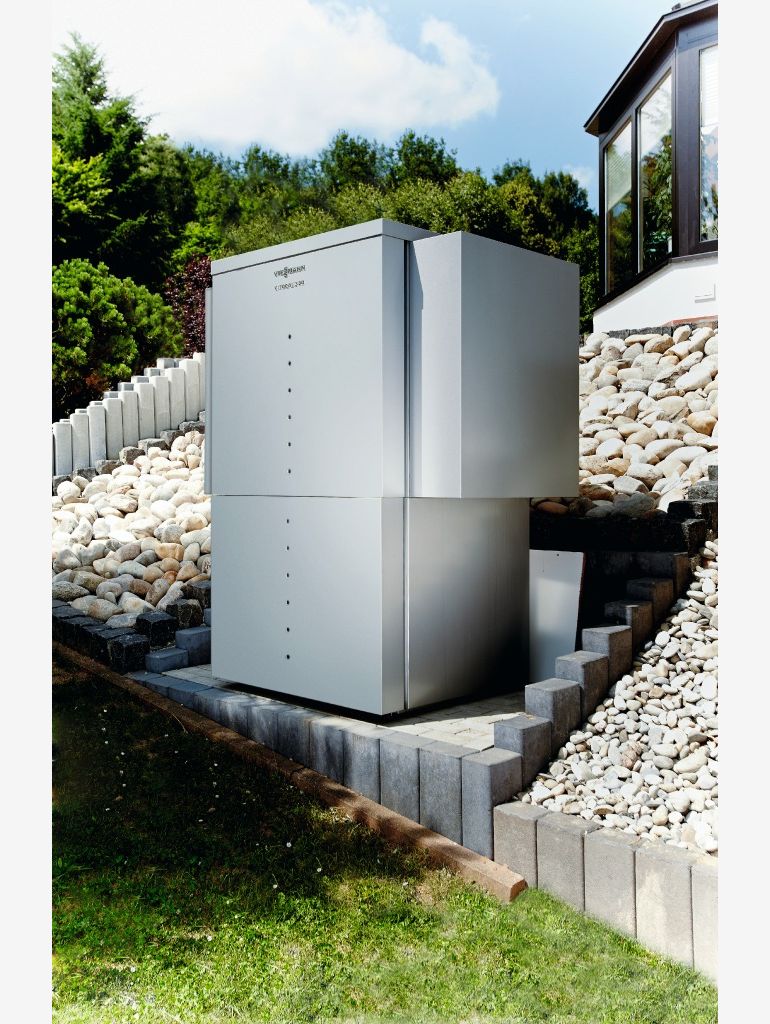While dealing with the subject matter of operating costs of the office buildings, heating costs are usually the main issue. Although they are vital, we can’t forget about expenses resulting from the cooling of the office space - the more that this process can be much more energy-consuming, and the demand for cooling in the summer may exceed the demand for heat in the winter. Therefore, it is necessary to choose a system which will cover the year-round energetic needs of the building; those connected with heating as well as those connected with cooling.
Mainly non-conventional energy sources are considered competitive in this field, and among them – a heat pump. Modern devices of this kind need a minimal amount of energy, using mainly free ‘fuel’, meaning the energy from the ground, the atmospheric air or the air discharged from the ventilation system or ground water (so called lower heat source; upper heat source is a factor used to distribute heat and cold in the facility, most often water or air). Especially using the energy of the ground and groundwater stabilizes the heating and cooling process, regardless of the conditions outside, due to the constant temperature of the lower heat source. 1,5 meter underground, regardless of the season, the temperature is between 8 and 12 ° C, while the ground water has a constant temperature of about 10 ° C; pumps are able to acquire energy from almost any source with a temperature of -25 to + 40 ° C.
Free cooling
The heat pump may successfully function as a cooling system, replacing air conditioning. Cooling in this case is carried out in one of two ways: naturally (or passively) and actively. What differs active and natural cooling is the way the compressor works – explains Dawid Pantera, an expert of Viessmann Academy. In case of natural cooling, we take advantage of the difference in temperatures between the lower and upper heat source, i.e. between the antifreeze liquid and the water in the cooling system. The effectiveness of this process depends largely on the abovementioned temperature difference. Usually at the beginning of the summer season the effects of cooling are satisfactory, however as the temperature of the lower heat source rises, the effectiveness of cooling decreases. However, as the natural cooling utilizes the circulation pumps, the cooling effectiveness exceeds 15 or even 20. It means that each kWh of electricity used to make the circulation pumps work, you get between 15 and 20 kWh of cooling energy supplied to the installation – he continues. Therefore we can gain even 20 times more energy than we use, and the cooling process doesn’t generate any costs.
Active cooling
In the seasons in which the temperature difference between the lower and upper heat source is decreasing, the process is realized by the so-called active cooling. The compressor also participates in the active cooling process. Inevitably, the efficiency drops to 3 to 5, which means a yield of 3 to 5 kWh of cooling energy per kWh of electricity supplied to the devices. Low efficiency in comparison to the natural cooling has its undeniable advantages. Active cooling allows for higher cooling capacity and lowering the temperature of water to almost any value, regardless of the temperature of the lower heat source of the heat pump - says the Viessmann expert.
Heat pump in an office building
To sum up, passive cooling utilizes the cold from the environment, whereas the active – an installation as a lower heat source for the device. Which system would be the best for an office building? Natural heating works well in the buildings which don’t need much cooling and in which there is no need for keeping a certain temperature of cooled rooms – explains Dawid Pantera. On the other hand, in the case of office buildings or other objects intended for people working there are very precise, strict rules regarding the parameters of the air which enters the building. Because of that a system which doesn’t allow for a precise setting of the temperature won’t work, hence the office buildings usually have active cooling.
Once we decide on cooling with a heat pump, we have to choose the devices which will implement the process in individual rooms. Fan coil units, installations with a recuperator and radiant heating are recommended to use with a heat pump. Fan coil units and recuperator fans are controlled by temperature sensors, whereas in case of radiant heating it will be necessary to use also the humidity sensor, for the system to turn off the cooling when the air reaches the humidity close to the dew point.
In some buildings, especially those constructed a few years ago, despite the heating system with a heat pump, a separate refrigerating unit is used for the cooling process. However, using the heat pump for both, heating and air conditioning is more and more common, and because of the energetic policy of the EU and raising awareness of the investors – also highly prospective.


